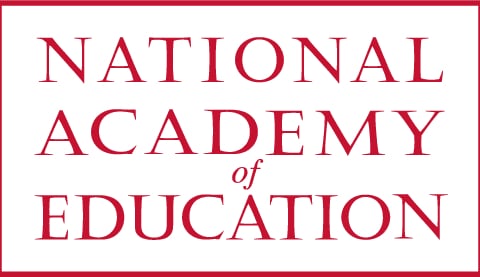COVID-19 Educational Inequities Roundtable Series Summary Report
INTRODUCTION
Based on the public health necessity presented by the COVID-19 pandemic, most U.S. schools closed their physical spaces in March 2020. Early evidence suggests that the closing of schools and migration to online learning has had harmful effects on children’s academic performance.1 Research on so-called “summer loss”2 and on recovery from natural disasters (e.g. Hurricane Katrina3) also shows that school disruption can slow academic progress and hamper social-emotional development of children. Moreover, the health crisis has surfaced for a broader public what many educators and policy makers have known for decades, namely growing disparities of resources and educational outcomes for historically marginalized, disadvantaged, and underserved students.4 Historic inequities make it all the more important to focus attention not only on the near-term needs of America’s 55 million public school students, but on whether and how the education system can continue the struggle for access and opportunity. The coincidence of COVID-19 with the overdue American reckoning with anti-Black violence and racism puts the current and ongoing educational challenge in stark relief.
Separating short-term resilience and crisis management from mending the cleavages that require sustained long-term tenacity creates a false dichotomy: the imperative is to maintain a steady vision of systemic overhaul even as preparations are made for the coming academic year. Immediate decisions need to be framed in such a way as to prevent a return to “normal” from becoming an excuse to abandon the quest for shaking up what has been for too many children an unfair and destructive “normal.”
The National Academy of Education (NAEd) convened groups of scholars, policy leaders, and educators to address this fundamental question: how do we address educational inequities in the face of the COVID-19 emergency, a challenge made even more urgent in the context of the resurgent American crisis of racial justice?
Over a two-week period in July 2020, experts in reading, mathematics, and well-being (the latter signifying our intent to include more than academic achievement in discussions of the sources and remedies for educational inequality) wrestled with the following six questions:5
- What inequities in reading/mathematics/whole person well-being have been exacerbated by the pandemic?
- What are the biggest challenges for addressing unfinished curricular learning6 in reading and mathematics instruction?
- What strategies are you using/recommending/discussing that may be “best bets” for reading/mathematics learning?
- What are the biggest challenges in addressing the effects of trauma on student well-being and social-emotional health with emphasis on the most vulnerable student groups?
- For schools using different modes of learning, including in-person, online, and a hybrid, what strategies would you recommend for bolstering/supporting well-being through these different platforms?
- If schools continue online learning, what are possible strategies for making the experience as successful as possible?
school closures on student academic achievement. NWEA Research; World Bank Group (2020). Simulating the potential impacts of
COVID-19 school closures on schooling and learning outcomes: A set of global estimates. Retrieved from:
http://pubdocs.worldbank.org/en/798061592482682799/covid-and-education-June17-r6.pdf
2 Alexander, K. L., Entwisle, D. R., & Olson, L. S. (2007). Lasting Consequences of the Summer Learning Gap. American Sociological Review, 72(2), 167–180. https://doi.org/10.1177/000312240707200202
3 Sacerdote, B., (2012). When the Saints go marching out: Long-term outcomes for student evacuees from Hurricanes Katrina and Rita. American Economic Journal: Applied Economics, 4(1), 109-35; Harris, D. N., & Larsen, M. F. (2018). “The Effects of the New Orleans Post-Katrina Market-Based School Reforms on Student Achievement, High School Graduation, and College Outcomes.” Education Research Alliance for New Orleans.
4 Duncan, G. J., & Murnane, R. J. (Eds.) (2011). Whither opportunity? Rising inequality, schools, and children’s life chances. New York: Russell Sage Foundation; Darling-Hammond, L. (2001). Inequality in Teaching and Schooling: How Opportunity Is Rationed to Students of Color in America. The Right Thing to Do, The Smart Thing to Do: Enhancing Diversity in Health Professions — Summary of the Symposium on Diversity in Health Professions in Honor of Herbert W. Nickens, M.D.. Washington, DC: The National Academies Press. https://doi.org/10.17226/10186.
5 Participants and their biographical information can be found at the end of this document.
6 Curricular learning refers to subjects learned through a school-based course of study, in contrast to informal learning.
